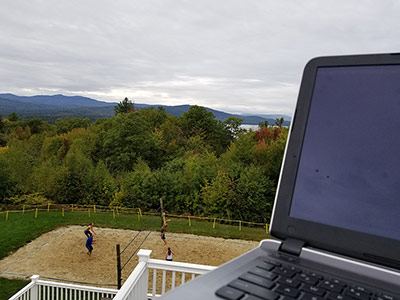What is Web Design?
Web design governs everything involved with the visual aesthetics and usability of a website—color scheme, layout, information flow, and everything else related to the visual aspects of the UI/UX (user interface and user experience). Some common skills and tools that distinguish the web designer from the web developer are:
- Adobe Creative Suite (Photoshop, Illustrator) or other design software
- Graphic design
- Logo design
- Layout/format
- Placing call-to-action buttons
- Branding
- Wireframes, mock-ups, and storyboards
- Color palettes
- Typography
Web design is concerned with what the user actually sees on their computer screen or mobile device, and less so about the mechanisms beneath the surface that make it all work. Through the use of color, images, typography and layout, they bring a digital experience to life.
What is Web Development?
Web development governs all the code that makes a website tick. It can be split into two categories — Front-End and Back-End.
The front-end or client-side of an application is the code responsible for determining how the website will actually display the designs mocked up by a designer. They turn a flat design into a fully functional website with all the interaction.
The back-end or server-side of an application is responsible for managing data within the database and serving that data to the front-end to be displayed. As you may have guessed, it’s the front-end developer’s job that tends to share the most overlap with the web designer. Some common skills and tools traditionally viewed as unique to the front-end developer are listed below:
- HTML/HTML5/CSS/CSS3/JavaScript
- CSS preprocessors (i.e. SASS)
- Responsive Frameworks (i.e. Custom Grids, Bootstrap, Foundation)
- Libraries (i.e. jQuery, AJAX, requireJS)
- Version Control (i.e. TFS: Team Foundation Server, Git/GitHub)
- Implementing Functional Specification documents
Front-end web developers don’t usually create mock-ups, select typography, or pick color palettes—these are usually provided by the designer. It’s the developer’s job to bring those mock-ups to life. That said, understanding what the designer wants requires some knowledge of best practices in UI/UX design, so that the developer is able to choose the right technology to deliver the desired look and feel and experience in the final product.

